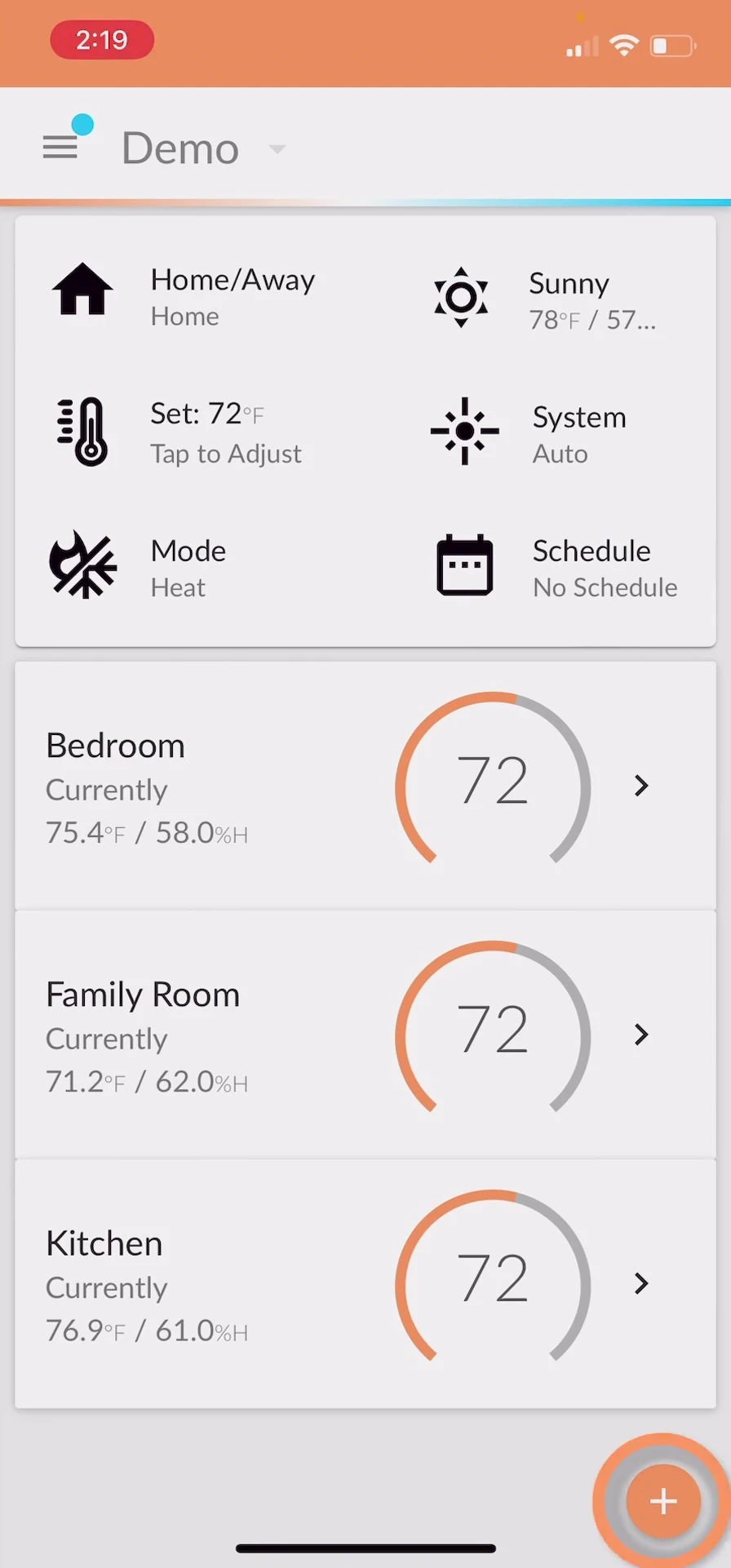This guide provides a step-by-step walkthrough for setting up a smart thermostat with a staged heating system, specifically focusing on systems utilizing both a primary heat source (like mini-splits) and a secondary heat source (such as a boiler). Proper configuration of staged heating maximizes energy efficiency and comfort by intelligently coordinating both heat sources based on your home's needs and the outside temperature. We'll cover the essential steps from initial thermostat installation and network connection to the critical configuration of cut-over and cut-back temperatures, ensuring your system operates optimally.This detailed instruction set will walk you through assigning thermostats to specific zones within your home, crucial for accurate temperature control. Understanding how to configure your smart thermostat to leverage your secondary heat source – whether for supplemental heating or as a primary source at lower temperatures – is key to realizing the full benefits of a staged heating system. By the end of this guide, you’ll have a perfectly configured system that provides both comfort and energy savings.
Pros And Cons
- Easy to integrate with Flare.
- Straightforward setup process for homeowners.
Read more: Nuwave PIC Titanium Induction Cooktop Review: A Mixed Bag of Features
Connecting the Smart Thermostat
Begin by adding your smart thermostat to the system. This usually involves accessing the app and selecting the 'add thermostat' option. You'll then need to connect your thermostat to your home's Wi-Fi network and authenticate your account.

The process often requires inputting your email address and password for verification. The system will guide you through the connection process, ensuring compatibility with your existing heating setup.

Once connected, specify the type of heating system you have (e.g., hydronic baseboard heating). This information is crucial for optimal performance and accurate temperature control.

Defining Thermostat Zones
Next, assign the thermostat to the specific rooms it controls. This step is vital for accurate temperature regulation and energy efficiency. If your system has multiple zones or thermostats, make sure each is correctly assigned to its designated area.

Carefully select all rooms heated by this particular thermostat's zone. Even if the thermostat is primarily located in one room, it might also influence the temperature of others. Accurate zone assignment is key to effective heating control.

Remember to review the selected zones to ensure accuracy. This will help the system properly regulate temperature across the entire home.
Configuring Secondary Heat
Navigate to the secondary heat configuration. This setting typically involves selecting the added thermostat as your secondary heat source (boiler in this case). This allows for staged heating, combining different heat sources for optimal performance and efficiency.

Choose how the secondary heat will operate – either supplementing the primary heat sources or replacing them entirely at lower temperatures. The ‘cutover mode’, where the primary heat (mini-splits) shuts off once the boiler kicks in, is a common choice and often preferred for energy savings.

Selecting the trigger for switching between heating stages is equally crucial. Outdoor temperature is often the most straightforward approach, ensuring your system adjusts according to the actual weather conditions.

Setting Cut-Over and Cut-Back Temperatures
Set the cut-over temperature, which determines when the secondary heat source (boiler) engages. This temperature triggers the secondary system either to supplement the primary heat or operate independently.

Also, set the cut-back temperature. This is the temperature at which the secondary heat source disengages, allowing the primary heat to take over again. This transition ensures energy efficiency and comfort.
These settings are crucial for balancing heating performance and energy consumption. Fine-tuning these temperatures based on your home's specific needs and climate is important.
Conclusion: Staged Heating System Effectiveness
Setting up a staged heating system with a smart thermostat offers significant advantages. It ensures optimal heating comfort by efficiently utilizing both primary and secondary heating sources.

The ability to customize cut-over and cut-back temperatures allows for personalized energy management, potentially leading to lower energy bills. This system offers a balance between energy efficiency and comfortable home temperatures.
Overall, integrating a smart thermostat for staged heating provides a more efficient, cost-effective, and comfortable heating experience for homeowners.
